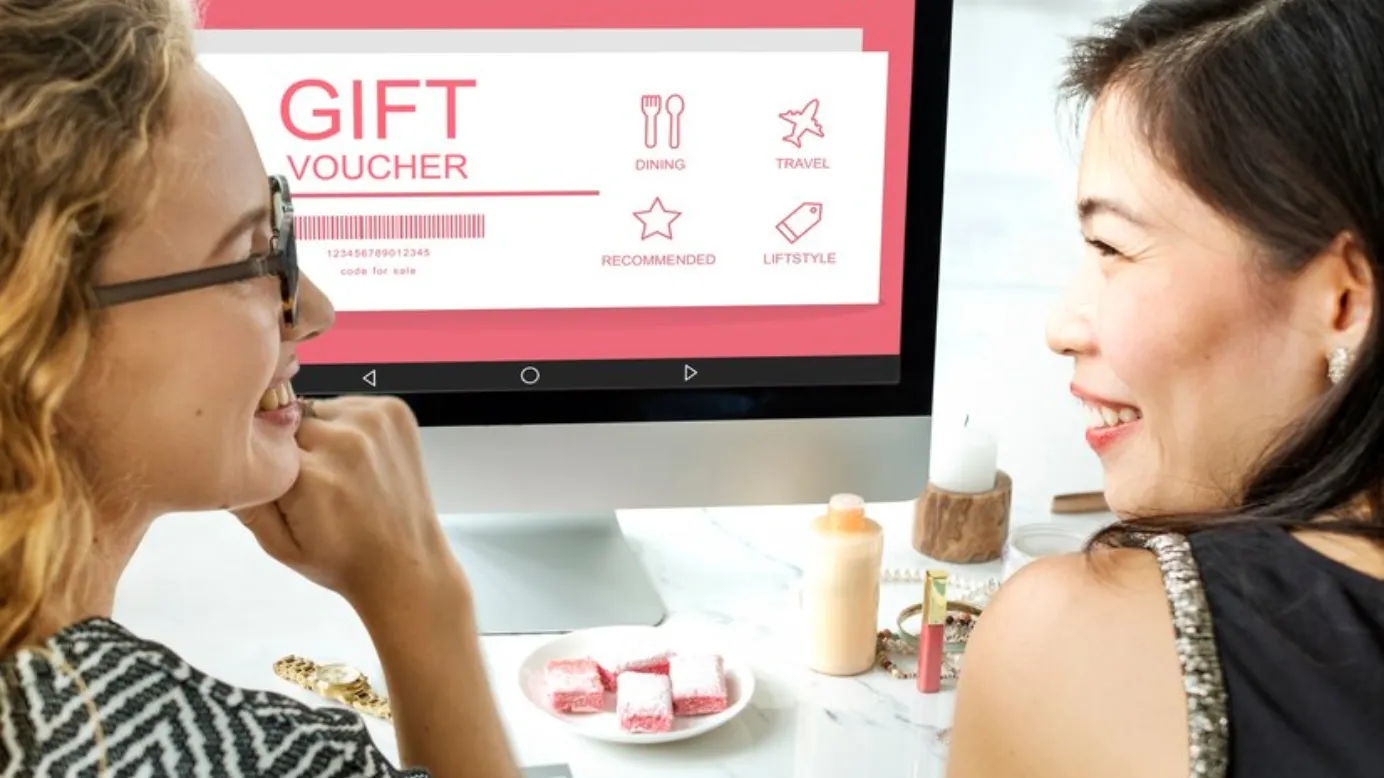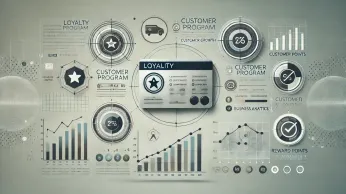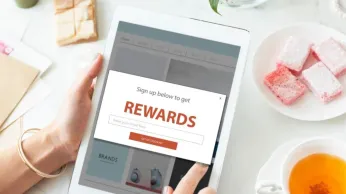On this page
Ever wondered how a company like LEGO, the world's largest toy manufacturer, came out on top in the era of the internet and the time when virtual recreational activities have taken over?
One answer: Customer loyalty reward program. In the early 2000s, LEGO faced financial difficulty due to video games and the internet which pushed the company to the brink of bankruptcy. However, LEGO staged a remarkable comeback, as it surpassed Mattel to become the world's leading toymaker by embracing its customer base.
For over 75 years, the company designed toys with minimal customer input. This approach needed an overhaul. Over the past decade, LEGO learned the value of collaboration and began building a strong relationship with its fan community.The traditional model of companies controlling customer interactions was fading. Today, interactions happen in a variety of online spaces: Twitch streams, social media groups, and online forums. LEGO recognized that this shift was crucial to LEGO's success.
In 2008, LEGO launched a revolutionary platform called "LEGO Ideas." This platform empowered fans by allowing them to submit concepts for new LEGO sets. Other fans could then vote on these ideas, with the most popular ones receiving a review by LEGO staff. Winning concepts were transformed into official LEGO sets, with the fan designer receiving 1% royalty.
"LEGO Ideas" has seen tremendous growth. The platform boasts over a million users, with a staggering 26,000 submitted ideas. This collaboration has resulted in the creation of 28 unique sets, including a set honoring the "Women of NASA" and a playable LEGO piano. Through "LEGO Ideas," the company transitioned from simply building toys for customers to building them with an engaged and passionate community.
One can say that by fostering genuine connections and empowering passionate individuals, companies can build thriving communities that will contribute to their long-term success. Therefore, in this blog, we will share our tips on how to build customer loyalty by learning from the biggest enterprises.
What is a loyalty rewards program?
A customer loyalty program refers to a marketing approach that recognizes the efforts of customers and rewards their continuous preference for their brand over competitors. This strategy encourages customers to keep coming back as these programs typically dole out points, discounts, or other special perks to customers for making repeat purchases.
The more a customer spends or the more frequently they shop, the more rewards they earn. Although this strategy might make many wary, there is a psychological allure that rewards have which makes such programs worth the investment.
With psychologist Norbert Schwarz revealing that even a small gesture, like a 10-cent reward, can create a sense of obligation (reciprocity) between people, a company can implement these programs without significant expense. To corroborate this, an Accenture study has revealed that customers enrolled in loyalty programs tend to spend up to 18% more compared to non-members.
If done right, a customer reward loyalty program can easily:
- Retain customers as these shoppers make purchases based not on just the price points, but the shared values, engagement, and the overall experience they have had of your brand.
- Gain more referrals. If your customers are enjoying your brand, they will talk about you to their friends and family.
- Be cost-effective. According to Harvard Business Review, it is 5 to 25 times more expensive to acquire a new customer. However, 65% of the business is driven by repeat customers.
- Get authentic content that works as your products' testimonials and instill trust. They will ultimately be the ambassadors for your brand.
Let’s go through some mind-blowing facts about loyalty rewards programs.
💡Quantifying the importance of a great loyalty rewards program:
- According to a Forbes study, increasing customer retention by just 5% can result in a significant profit boost, exceeding 25%.
- The same study also showed that loyal customers are not only more likely to recommend a company to others through positive word-of-mouth marketing, but they also tend to have higher Net Promoter Scores, which measure customer satisfaction and loyalty.
- A Sinch Annual Report has shown that 87% of customers actively avoid buying from brands they don’t trust.
- A 2022 Forrester study found that only 3% of companies in the United States prioritized a customer-centric approach. It is a concerning decline of 7% compared to data from the previous year.
- According to another Forrester report, nearly 59% of customers place their trust in the brands they interact with, making the matter of building rapport important for enterprises.
- A large majority of customers, exceeding 73%, expect companies to recognize and address their individual needs and desires, revealed a Salesforce report.
- Nearly 79% of Americans are more inclined to participate in a rewards program that eliminates the need to carry a physical card.
Doing your due diligence for customers incorporating a customer reward loyalty program will determine multiple aspects of your business, including the retention rate, and CAC. However, to gauge the loyalty of a customer, you can choose to implement multiple ways. Let's discuss the different types of customer reward loyalty programs that you can run.
Benefits of implementing loyalty rewards program
Loyalty reward programs are more than just a marketing tool; they are a powerful strategy for building long-term relationships with customers. Implementing an effective loyalty program can offer numerous benefits that go beyond merely increasing sales. Here are some key advantages:
1. Increased customer retention
One of the most significant benefits of loyalty reward programs is their ability to boost customer retention. When customers feel valued and rewarded for their loyalty, they are more likely to return to your brand instead of exploring alternatives. This consistent engagement helps to create a strong customer base that is less susceptible to competition.
Loyalty programs like Kroger’s Plus Card demonstrate how customer retention can be effectively achieved. By offering personalized discounts and fuel rewards based on shopping habits, Kroger has managed to keep customers returning to their stores. This approach not only rewards loyal customers but also builds a sense of connection and appreciation, which is crucial in a competitive retail environment.
2. Customer data insights
Loyalty programs provide valuable insights into customer behavior and preferences. By tracking how customers earn and redeem rewards, businesses can gather data that helps in personalizing marketing efforts, optimizing product offerings, and improving customer experiences. This data-driven approach allows businesses to make informed decisions that can enhance overall customer satisfaction.
A well-known bank aimed to improve customer engagement with a personalized rewards program. Loyalife provided a digital rewards platform for this purpose. This platform allowed the bank to offer personalized rewards to its customers.
The initiative led to improved customer satisfaction and higher retention rates. Data showed a significant increase in customer participation in the rewards program. This resulted in higher transaction volumes and increased profitability for the bank. The successful program implementation resulted in:
- A 146% increase in customer engagement through personalized rewards and a diverse redemption catalog.
- A 170% growth in transaction volume.
- A 62% expansion of the user base within just 22 months.
3. Enhanced brand loyalty
A well-designed loyalty reward scheme can significantly enhance brand loyalty. Customers who participate in these programs often develop an emotional connection with the brand, seeing it as more than just a place to shop. This emotional bond is what turns ordinary customers into brand advocates who are likely to promote your brand to others.
Tarte Cosmetics’ Tarte Rewards program is a great example of how brand loyalty can be enhanced. The program offers not just points for purchases but also opportunities for members to engage with the brand through social media and community events. This level of engagement creates a deeper connection with the brand, fostering loyalty that goes beyond the transactional level.
4. Higher average order value
Loyalty programs can also encourage customers to spend more. By offering rewards that require a certain level of spending, businesses can motivate customers to increase their average order value. This is especially true for tiered programs where customers strive to reach higher levels for better rewards.
Ulta Beauty’s Ultamate Rewards program has successfully increased average order values by offering points that can be redeemed for high-value products. The program’s structure encourages customers to make larger purchases to earn more points, which can then be used to redeem premium items, driving both sales and customer satisfaction.
5. Competitive advantage
In a crowded marketplace, a well-executed loyalty program can give your brand a significant competitive edge. Customers are more likely to choose a brand that offers a rewarding experience over one that doesn’t. Loyalty programs not only attract new customers but also help retain existing ones, which is crucial in maintaining market share.
Panera Bread’s MyPanera loyalty program exemplifies how a competitive advantage can be achieved. By offering personalized rewards and a seamless, digital-first experience, Panera has differentiated itself from other casual dining options. The program’s success lies in its ability to make customers feel appreciated and valued, which in turn fosters loyalty and repeat business.
Types of loyalty reward programs
Loyalty rewards programs encourage customers to return and make repeat purchases. These programs offer various rewards for customer engagement and generate brand loyalty. Here's a breakdown of some popular loyalty program structures:
1. Points-based programs
Customers earn points for actions like purchases, reviews, or referrals. These points can be redeemed for discounts, free products, or exclusive experiences.
💡Example: Millions of people across the country participate in the Starbucks Rewards loyalty program. This program allows members to earn Stars for every qualifying purchase they make at participating Starbucks locations.
Earning Stars goes beyond just free drinks; members can also redeem them for food and other rewards. In addition to these redemption options, there are many other advantages to joining Starbucks Rewards.
2. Value-based programs
Rewards are personalized based on a customer's past purchases and preferences. This fosters a sense of exclusivity and caters to individual needs.
💡 Example: The Ultamate Rewards program is a system that rewards customers for their purchases. When you buy products at Ulta, you earn points. The more points you accumulate, the higher your tier in the program becomes. As your tier increases, you unlock personalized discounts and special birthday gifts.
3. Tiered programs
Customers progress through tiers based on their spending or engagement. Higher tiers unlock increased benefits like exclusive discounts, priority access to new products, or personalized customer service.
💡Example: Marriott Bonvoy offers six membership levels with varying benefits based on the number of paid nights stayed per calendar year. The membership levels include Member, Silver, Gold, Platinum, Titanium, and Ambassador.
Each level offers a range of perks such as free Wi-Fi, exclusive member rates, mobile check-in, and more. The benefits increase as members progress to higher tiers, with Ambassador Elite status being the most exclusive and offering personalized services and additional rewards.
4. Subscription-based programs
Customers pay a subscription fee for ongoing benefits. This can include free shipping, access to exclusive products, or early access to sales.
💡Example: The levels of Hulu subscription-based programs include Hulu with Ads & Without Ads Plan, Hulu + Live TV Plan, and Hulu + Live TV Plan with or without ads. Hulu subscriptions are access to a large on-demand content library, live TV streaming, convenience and flexibility, potential cost savings over traditional TV, and bundling options with other popular streaming services.
These programs are important because they:
- Increase customer retention
- Boost customer engagement
- Gather valuable customer data
Let us share with you five case studies to showcase how a customer loyalty rewards program has the mettle to alter the course of your business.
Companies with best loyalty rewards programs to take inspiration from
Following are five loyalty rewards program examples on which we will base our key findings on customer loyalty rewards programs.
1. Starbucks reported a substantial 7% increase in sales with three major loyalty programs
Starbucks is a well-known and successful beverage brand around the world. While their delicious drinks are a factor, a major reason for their popularity is their loyalty program. However, Starbucks, amidst stark competition, wanted to drive customer loyalty and spending. Moreover, Starbucks aimed to create a more engaging experience that goes beyond just a cup of coffee. So, the beverage mammoth implemented three customer loyalty rewards programs to enhance the overall Starbucks experience.
Solution
The Starbucks loyalty programs began on December 26th, 2009. There were three loyalty programs driven toward one single aim: to increase sales, improve retention rate, and significantly redefine the customer experience at every given touch point. Let's stretch more on how each type of retention tactic worked out for Starbucks.
Earning Stars: Starbucks Rewards used a tiered system to award Stars, their points currency. Members earn Stars for purchases made with a registered Starbucks Card or the mobile app. The program encourages different ways to participate, creating a more rewarding experience for customers. Through this campaign, you,
- Earn 1 Star for every $1 spent when paying with cash, credit, or debit cards.
- Earn 2 Stars for every $1 spent when using a preloaded digital Starbucks Card.
- Earn bonus Stars through special promotions and offers.
- Earn double Stars on certain travel days and promotional days.
Redeeming Stars: Stars can be redeemed for various rewards at different levels. This structure caters to individual preferences, allowing customers to choose between smaller, immediate rewards or save Stars for more valuable items. This program allowed its customers to:
- Redeem 25 Stars for a free drink customization, like an extra shot of espresso or a different type of milk.
- Redeem 50 Stars for a complimentary hot beverage, tea, or a bakery item.
- Redeem 150 Stars for a handcrafted drink, hot breakfast sandwich, or parfait.
- Redeem 200 Stars for a lunch item, such as a salad, sandwich, or protein box.
- Redeem 400 Stars for packaged coffee beans or select Starbucks merchandise.
Coalition Loyalty: Starbucks and Delta Airlines partnered to offer combined benefits for frequent flyers and coffee lovers. It was a rather strategic yet refreshing take on reward programs as they linked the Delta SkyMiles® and Starbucks® Rewards accounts of the customers. This allowed them to earn Stars and miles simultaneously and unlock exclusive perks. The Coalition loyalty allowed the customers to:
- Earn double Stars on days you travel with Delta.
- Earn 1 mile per $1 spent at Starbucks when you link your accounts.
- Gain access to special offers for earning additional Stars and miles.
Result
It was a wide-out customer loyalty program designed by Starbucks to gather customer data and leverage that data to turn it into a strategy. As a result,
- These customer loyalty programs amassed over 30 million active members
- The reward loyalty rewards program contributed to nearly 60% of the brand's total revenue.
- Starbucks reported a substantial 7% increase in sales primarily attributed to the efficacy of its rewards program.
2. Costco’s net sales increased by 9.7% to $138.4 billion owing to its revolutionary membership program
Costco is one of the most influential multinational retailers which has a record of 94 million Costco membership cards worldwide. However, the wide network of people preferring Costco over other retailers isn't the reason why it is influential. It is because of its unique business model and operational philosophy.
The company operates an international chain of membership warehouses under the "Costco Wholesale" name. What is more scintillating is that it offers quality, brand-name merchandise at lower prices than conventional retail sources. This factor has led many to turn to Costco.
The membership plan turns enthusiasts into fans
To ensure that Costco remains a fan-favorite amidst the growing competition, Costco implemented a unique membership loyalty model. Costco's membership-based approach fosters customer loyalty and repeat business. The company offers three types of memberships - Executive, Business, and Gold Star. Each membership has various benefits and discounts.
This strategy focuses on retaining members and driving sales through exclusive offers and services. Moreover, this membership enthusiasm extended to social media platforms which Costco leverages fully to keep the customers hooked. It has dedicated Instagram accounts like @costcodeals and websites like CostcoInsider.com.
The reach of Costco's influence goes beyond shopping, becoming a travel destination for some fans, with one visiting 70 stores, and even a wedding venue for at least one couple. This level of devotion to a grocery store might seem unusual to some, but not to Costco shoppers.
Costco Membership is 'THE STRATEGIC PLAN' your company needs
Costco creates a deliberate strategy to cultivate loyal customers. One key element is the membership fee. Costco requires customers to pay an annual membership fee to shop at their stores. This fee creates a sense of exclusivity. Customers feel they are part of a special group with access to unique benefits.
There's also a psychological aspect at play. Since the membership fee is already paid which is a sunk cost, members feel motivated to get their money's worth by shopping at Costco frequently and buying more items each time.
This is according to a study on club shopping by Kusum Ailawadi. Costco's strategy is effective. The company boasts a high membership renewal rate and many paying members. So, as a result, it has a very loyal customer base.
Costco offers the best value to members by selling high-quality items at low prices and providing excellent service. They carefully select top-notch products and negotiate with suppliers for savings passed on to members.
Popular examples include their $4.99 rotisserie chicken and $29.99 sheet cake. Costco prioritizes low prices over maximizing profits, and its generous return policy reflects its commitment to customer satisfaction.
The commitment pays off
Several factors contribute to Costco's success.
- Customers appreciate the enjoyable shopping experience, the value they receive for their money, and the bulk-buying options.
- Membership fees became another source of revenue for Costco
- Costco's financial performance in fiscal year 2018 was strong.
- Net sales increased by 9.7% to $138.4 billion.
- Membership fee revenue grew by 10.1% to $3.1 billion, and profits rose by 17% to $3.1 billion, according to the company's annual report.
3. Lego records a staggering 3,280% rise in loyalty transactions after implementing its own loyalty program
Lego, a well-known and beloved toy company, has always found success with its innovative and fun products for all ages. However, in today's competitive business environment, having strong customer relationships is essential. According to a Salesforce study, many customers appreciate personalized offers and rewards programs.
LEGO not only understood that it had to change its retention tactics but required new ways to significantly increase revenue and strengthen customer relationships. So, to cultivate lasting customer loyalty in a competitive marketplace, Lego decided to create its own loyalty program.
A tailored loyalty program drawn carefully to drive results
Lego decided to create a loyalty program to encourage customers to keep coming back. They partnered with ZAP, a company that specializes in creating loyalty programs for other businesses. The tailored LEGO loyalty rewards program offered benefits such as points and exclusive discounts for members.
The program was easy to integrate with LEGO's existing operations and provided full control over branding and customer experience. This allowed Lego to maintain control over the program's design and keep its brand at the forefront of all customer interactions.
ZAP also helped Lego integrate the program with their existing systems quickly and efficiently, reducing costs and ensuring a speedy launch. This resulted in a program that customers were excited to join.
Astonishing results
LEGO's loyalty program achieved remarkable results within its first year.
- The number of customer visits increased by 3,691%
- New members joined at a rate of 2,310% higher
- The value of loyalty transactions rose by a staggering 3,280%.
4. The Prime Effect: Amazon converts 72% of trial users to paid users using a unique loyalty program
Introduced in 2005 as a paid subscription service offered by Amazon, Amazon Prime has become one of the most sought-after services worldwide. It has reached over 200 million subscribers worldwide by 2021, with its constantly expanding features. Prime members get to access a range of perks that cater to different needs and preferences of the consumer.
Their benefits start from free and fast shipping, and access to streaming services like Prime Video and Prime Music, to exclusive deals, and more. Amazon Prime has become a highly successful loyalty program in recent years, even without relying on points or basic predictions of customer behavior. This case study explores how Amazon Prime has managed to garner the attention of millions, and exceptionally, retained its consumers through the market shift.
The Problem
Although a favorite in the market, Amazon recognized significant hurdles for customers completing purchases. Their analysis revealed the slow shipping speeds and minimum order amounts for free shipping to be the source of the problem. Understanding the impact of the loyalty program, they set out to implement one without including the traditional approach. As there are already too many customer loyalty reward programs with points and rewards, Amazon knew people wanted real benefits now, not something they had to wait for, so they looked for a different solution.
So, they developed a paid yearly membership, Amazon Prime, which directly addressed customer pain points by providing fast and free shipping on eligible items. This eliminated the need to worry about minimum order amounts or waiting for deliveries. In essence, Prime offered immediate and tangible value to customers, bypassing the drawbacks of programs that relied on points and delayed gratification.
Solution Amazon sought
Amazon Prime understands that customers want fast and convenient shopping. To address this, they created a membership program that offers fast, free shipping and exclusive benefits like early access to deals and new products. Prime members benefit from fast, free shipping on their purchases. It eliminates a major hurdle in the online shopping process. This focus on convenience extends beyond delivery speeds, as Prime also grants exclusive access to deals and new products before they hit the general market.
Prime membership also allows the consumer a library of streaming videos as it provides entertainment for members while simultaneously generating valuable data for Amazon to use in future content development. This creates a win-win scenario: members gain access to a vast content library, and Amazon gathers insights to refine its offerings.
Astonishing results
Unlike programs that rely on cash-back rewards, Prime focuses on providing a better customer experience. This strategy has paid off in spades as Amazon noticed:
- Rapid adoption rate, with 40% in subscriptions year on year even though the loyalty program is nearly 12 years old.
- In 2020, Amazon reported that its global Prime membership base had grown to 200 million, up from 150 million at the end of 2019.
- There were about 167 million Amazon Prime subscribers in the United States in 2023, and around 71% of U.S. Amazon shoppers were Prime members that year.
- In Q1 2023, 72% of Amazon Prime trial users converted to paid subscribers, up from 67% in Q1 2022.
- The same study shows, 97% and 99% of members renewed their memberships for the first and second years, respectively.
This shows that many people find Amazon Prime to be a valuable service.
5. Sephora records industry-leading 6% rise in the Client Loyalty Index with new CLI in place
Sephora is a widely recognized cosmetics retailer. It is renowned for its cutting-edge products and unwavering commitment to customer satisfaction. However, to stand apart from its competitors, Sephora implemented a customer feedback program. This initiative reflects Sephora's dedication to continuous improvement. Moreover, it ensures that their already exceptional customer experience remains at the forefront of the industry.
Problem with the existing system
Management required a clear view of customer experiences at individual stores to pinpoint areas for improvement. However, the lack of a user-friendly system led to employee disengagement with customer feedback. Additionally, there was no existing system to gather customer insights on new products and initiatives.
CLI as a Solution
Sephora uses a metric called the Client Loyalty Index (CLI) to gauge customer loyalty. To improve this score, Sephora implemented a comprehensive customer feedback program. This program aimed to give managers a clearer understanding of customer experiences at individual stores, pinpoint areas needing improvement, and train employees more effectively. Sephora sought a flexible solution that would not only uncover potential new products and retail strategies but also allow them to track the effectiveness of their innovations. As a result:
- They enabled a user-friendly interface with customizable dashboards.
- Access real-time data analysis that allows Sephora to swiftly test and implement initiatives and products.
Result tracked
Sephora's focused on enhancing the customer experience and it paid off tremendously:
- Since its launch in 2008, the company has observed continuous improvement across nearly all customer experience metrics.
- They noticed a significant increase in customer loyalty, a 6% rise in the Client Loyalty Index.
- The average user logs in two to three times more compared to before.
- Sephora now rapidly evaluates new ideas by gathering customer feedback in real time.
6. Indonesian Hotel Chain Sees 23% Boost in Loyalty Memberships with Loyalife
A prominent hotel chain in Indonesia aimed to enhance customer loyalty and increase repeat bookings among its existing clientele. To achieve this, they implemented Loyalife, focusing on personalized guest experiences and effective marketing campaigns.
Challenges
The hotel chain faced several challenges in strengthening customer retention:
- Encouraging Frequent Visits and Longer Stays: They needed to design a loyalty marketing campaign that incentivized guests to visit more often and extend their stays through a tiered rewards system.
- Fostering Deeper Guest Connections: Creating personalized experiences that resonated with diverse customer preferences was essential to promote brand loyalty and encourage repeat bookings.
- Seamless Integration: Ensuring the loyalty program integrated smoothly with existing booking and customer management systems was crucial for providing a unified guest experience.
Solutions Implemented
To address these challenges, the hotel chain utilized Loyalife in the following ways:
- Personalized Loyalty Experience: By leveraging Loyalife, the hotel offered tailored rewards and sent personalized communications based on individual guest behaviors and preferences, fostering deeper connections and encouraging active engagement with the loyalty program.
- Omnichannel Communication: The platform facilitated communication through various channels, including email, SMS, and in-app notifications, ensuring guests received timely information about promotions and personalized offers, thereby enhancing their overall experience.
- Diverse Reward Options: Offering a variety of redemption choices, such as room upgrades, complimentary stays, and dining experiences, allowed guests to select rewards that matched their interests, promoting higher engagement with the program.
- Campaign Management Tools: Loyalife's robust campaign management capabilities enabled the hotel to design, implement, and monitor targeted marketing campaigns aimed at increasing bookings, particularly for extended stays.
Results
The implementation of Loyalife led to significant positive outcomes:
- Increase in Loyalty Memberships: The hotel chain achieved a 23% growth in loyalty program memberships within six months.
- Boost in Annual Bookings: The targeted marketing campaigns resulted in 38,000 additional annual long-stay bookings.
The Chief Marketing Officer of the hotel chain highlighted the impact of Loyalife, stating that the solution was crucial in boosting loyalty memberships and annual bookings. The platform simplified the management of loyalty programs and customer campaigns, providing comprehensive data on transactions and redemptions, which facilitated the customization of guest experiences.
Discover how Loyalife can help your business boost customer retention, increase repeat bookings, and create personalized experiences that keep your customers coming back. Connect with our loyalty experts now.
Key Learning on how to hack the loyalty reward program
Based on our review of successful loyalty programs from various industries, let's explore the key learnings that we can incorporate into our program design.
1. From Starbucks, we learned to
- Incentivize the customers via rewards and loyalty points
- Leverage multiple communication channels including a dedicated landing page, mobile app, emails, blogs, and social media to ensure widespread awareness and engagement.
- Maintain consistent updates and transparency in front of the consumers
- Consider going into a coalition loyalty program to expand the program's reach. It creates a more integrated customer experience.
2. From Costco, we learned to
- Offer high-quality products at low prices would prompt customers to choose Costco over other retailers.
- Consider including an enjoyable shopping experience, bulk-buying options, and a generous return policy.
3. From Lego, we learned to
- Offer tailored loyalty programs that offer rewards tailored to individual customer preferences can be even more effective. For such an instance, you can choose Loyalife empowers businesses to create personalized and interactive experiences that keep customers actively engaged and loyal.
- Have control over brand experience. Ensure a consistent customer experience that aligns with their brand identity.
- Keep tracking the metrics to measure the success of your loyalty programs. Analyse, adapt, and change accordingly.
4. From Amazon, we learned to
- Understand the customer's pain points and provide immediate and tangible value.
- Leverage the data curated from the analysis to optimize the search engine for a better customer experience.
- Provide a better customer experience by offering what the customers desire to enhance the overall shopping process.
- Provide solutions that offer immediate value and convenience.
5. From Sephora, we learned to
- Consider implementing a well-designed customer feedback program as it can go a long way.
- Get valuable insights into customer needs and pain points to identify areas for improvement and develop ideas.
- Have a user-friendly system. When customers find it easy to collect and analyze feedback, they're more likely to be engaged in the process.
- Have an agile system in place. Sephora implemented their personal CLI to get real-time data. Getting real-time data analysis allows businesses to quickly adapt and implement changes based on customer feedback. This agility is crucial for staying ahead of the competition. Consider Loyalife for real-time data analysis. Loyalife provides comprehensive data analytics and reporting capabilities. Businesses can gain insights into customer behavior, purchase patterns, and program effectiveness.
These data-driven insights help refine strategies, optimize the customer experience, and make informed decisions to boost sales and brand value.
Loyalife: Powering innovative loyalty rewards programs
Loyalife provides comprehensive solutions for creating loyalty reward schemes, enabling businesses to enhance customer engagement and retention through tailored loyalty programs. Here are key-ways Loyalife can assist organizations in implementing effective loyalty reward programs:
- Design and manage loyalty programs that can be tailored to specific goals and customer needs.
- The platform offers access to a vast marketplace of rewards.
- Loyalife automates many aspects of managing rewards, including tracking customer purchases and awarding points.
Loyalife empowers organizations to create effective loyalty reward programs by providing customizable solutions, diverse rewards, automation tools, strong security measures, global reach, and integration capabilities. These features collectively enhance customer satisfaction and drive brand loyalty. Schedule a call with the specialist of Loyalife to learn more.
Conclusion
Loyalty reward programs are essential for building strong customer relationships. They go beyond encouraging repeat purchases by creating lasting connections with customers. A well-designed program tailored to your audience can enhance customer retention, provide valuable insights, and give your brand a competitive edge.
Implementing a successful loyalty program involves careful planning, choosing the right rewards, and regularly updating the scheme to keep it relevant. While challenges like customer engagement and data privacy exist, the benefits far outweigh the effort.
Businesses that align their loyalty programs with customer values and preferences are more likely to create loyal brand advocates, driving long-term success.
FAQ's
1. How can a loyalty rewards program boost customer retention?
A well-designed loyalty program encourages repeat purchases by offering customers incentives such as points, discounts, or exclusive perks, making them more likely to stay connected with your brand.
2. What are the key features of an effective loyalty program?
Key features include personalized rewards, easy-to-use interfaces, omnichannel accessibility, flexible point systems, and engaging elements like gamification and tier-based benefits.
3. How do businesses measure the success of their loyalty programs?
Success can be tracked through metrics like customer retention rates, repeat purchase frequency, program engagement levels, and the overall increase in customer lifetime value.
4. Can loyalty programs be customized for different industries?
Yes, loyalty programs are highly adaptable. Whether in retail, hospitality, or financial services, programs can be tailored to meet specific customer behaviors and business goals.
5. What are some common mistakes to avoid when launching a loyalty program?
Common pitfalls include overly complicated reward structures, lack of personalization, poor communication about program benefits, and failing to regularly update or refresh the program.
6. How important is personalization in a loyalty rewards program?
Personalization is crucial. Tailored rewards based on customer preferences and purchase history significantly improve engagement and make customers feel valued.
7. Are digital loyalty programs more effective than traditional ones?
Digital programs offer greater flexibility, easier tracking, and seamless integration across channels, making them more effective for businesses aiming to engage tech-savvy customers.
8. How can small businesses benefit from loyalty rewards programs?
Small businesses can build strong customer relationships, encourage word-of-mouth referrals, and compete with larger brands by offering personalized, value-driven rewards that foster loyalty.








